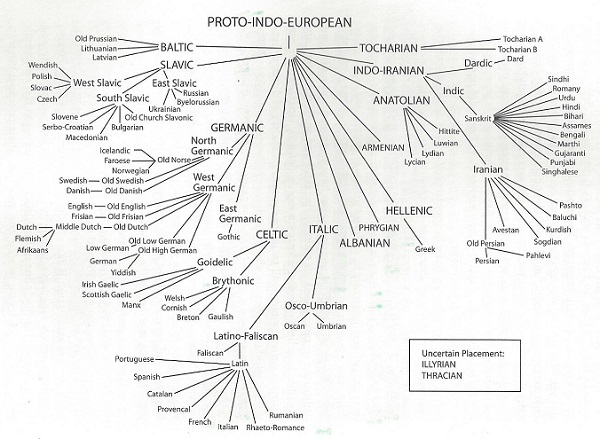Warning: longer essay-style post.
David B Anthony in his extraordinary book The Horse, the Wheel, and Language: How the Bronze-age Riders from the Eurasian Steppes Shaped the Modern World tells us that language normally changes so that speakers 1000 years apart cannot understand each other. As an example here is the beginning of the Lord’s Prayer in a conservative, old-fashioned version of Modern Standard English:
- Our Father who is in heaven, blessed be your name
Here it is in Chaucer’s English of 1400:
- Oure fadir that art in heuenes, halwid be thy name
Now try Old English of 1000:
- Fæader ure thu the eart on heofonum, si thin nama gehalgod
When British jurist Sir William Jones arrived in Calcutta to become a member of the Bengal Supreme Court in 1783 he was already famous as a linguist for his translations of medieval Persian poetry amongst other works. At that time he already knew French, German, Latin, Greek, Welsh, Persian, Arabic, Hebrew and Gothic, the earliest written form of German. In order to do his job he decided to tool up on Sanskrit. In 1786 he announced an amazing discovery. Latin, Greek and Sanskrit stemmed from the same original language. Just had to be. He also found that Celtic, Gothic and Persian probably came from the same source. Indeed he was right.
Very common words tend not to change much. The word for mother, for example is strikingly similar across a range of languages. Hence we have Middle English moder, Dutch moeder, German Mutter, Irish máthair, Tocharian mācar, Lithuanian mótė, Latin māter, Greek meter, Russian mat’, Persian madar and Sanskrit mātṛ.
The original Proto-Indo-European word has been reconstructed as *méh₂tēr.
You can find more related words here.
In fact all European languages belong to what is now recognised as the Indo-European language group (list here) except Basque, Estonian, Finnish and Magyar (Hungarian).
To the east the Indo-Iranian sub-group includes the majority of modern languages of India including Hindi, Urdu and Bengali.
I’ve included here a chart of the Indo-European language taxonomy from David Anthony’s book:

Some of the individual languages are barely legible, but the overall picture is clear.
This Dan Short page provides a useful broad family tree divided into the so-called Centum and Satem groups, divided according to the word for hundred. Neither of these taxonomies helps with the timeline. Anthony gives the following as the best branching diagram, based on the Ringe_Warnow_Taylor (2002) cladistic method: Continue reading Deep origins: language
